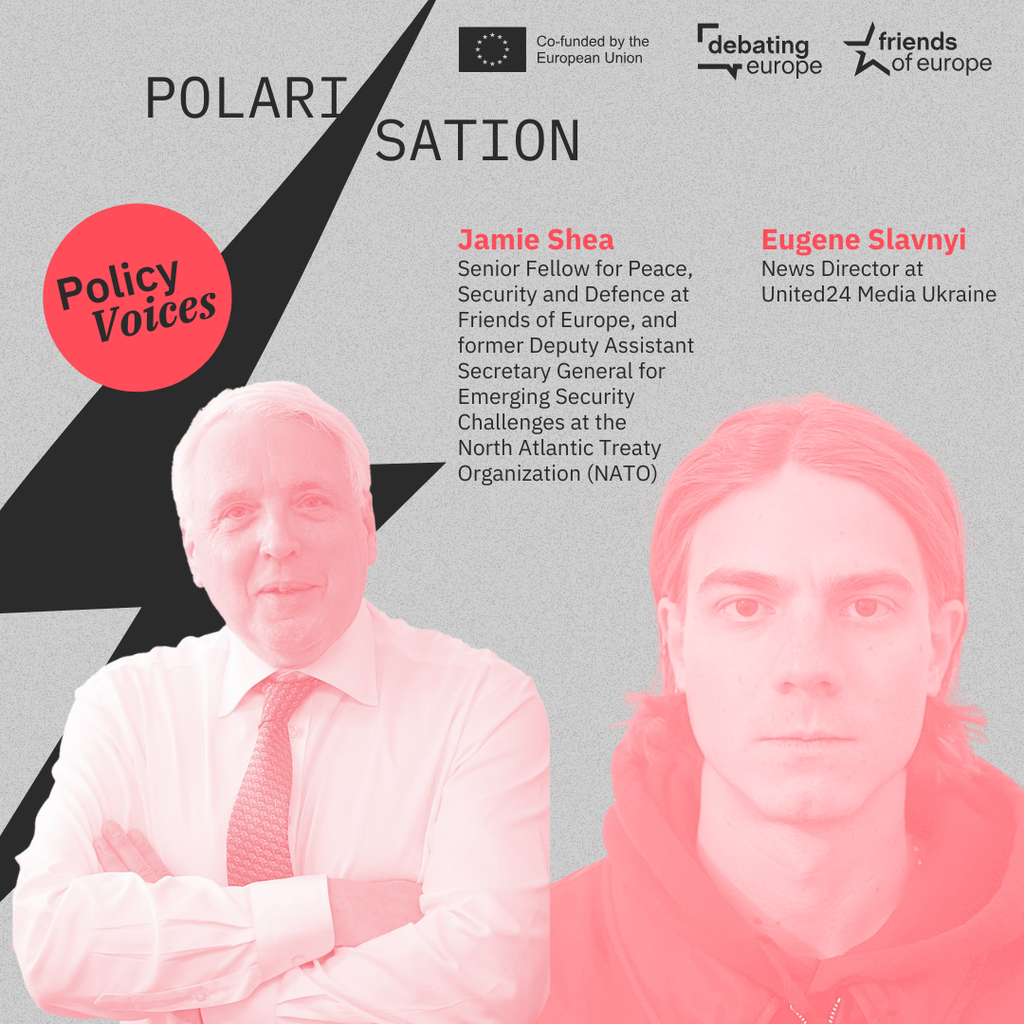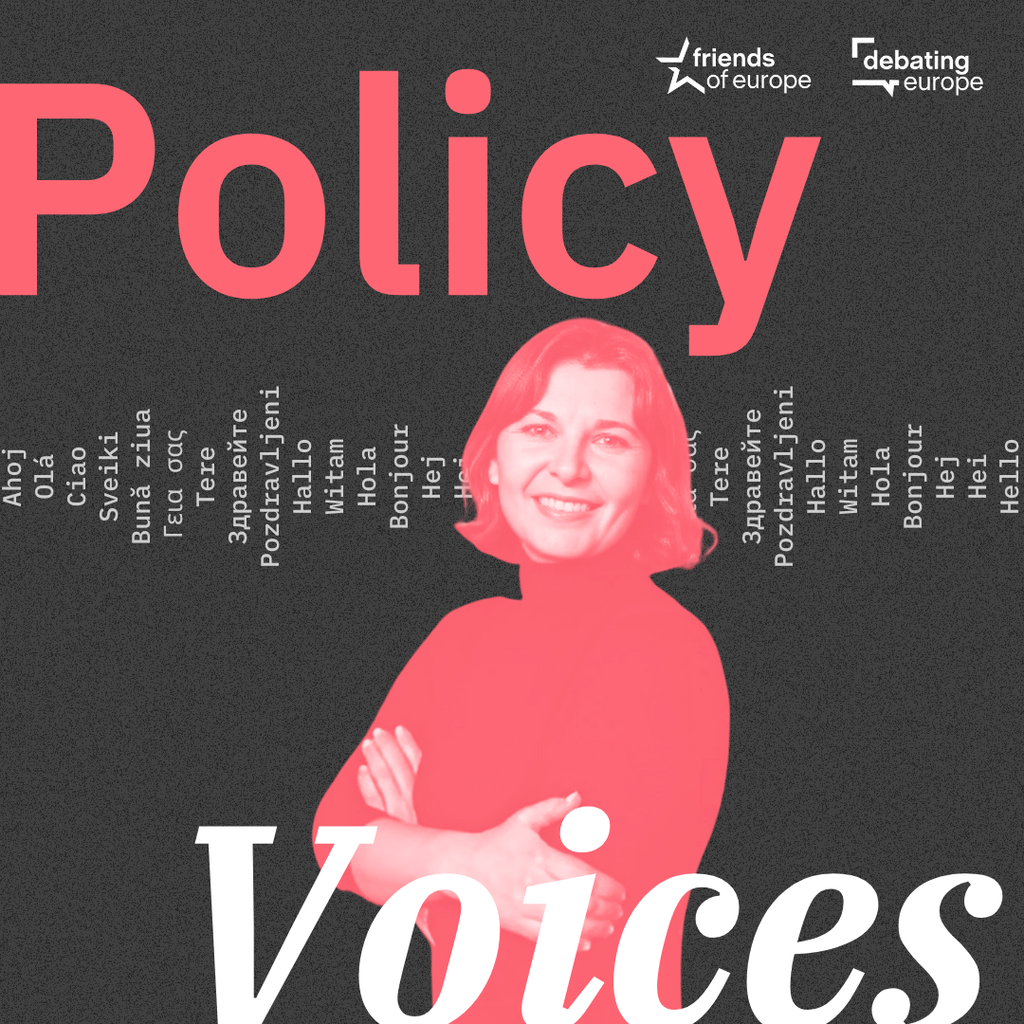From ambition to action: building Europe’s Defence Union
Past event In person

- Area of Expertise
- Peace, Security & Defence
Peace, Security & Defence

Senior Fellow for Peace, Security and Defence at Friends of Europe, and former Deputy Assistant Secretary General for Emerging Security Challenges at the North Atlantic Treaty Organization (NATO)
This autumn, the conference to review the Non-Proliferation Treaty (NPT) will be held at the United Nations Headquarters in New York. Like so many major diplomatic events, such as COP26, it has been postponed by a year due to the COVID-19 outbreak. As we approach the conference, the major powers have been looking at what they can put forward as proof that global efforts in favour of arms control, non-proliferation and disarmament are not as frozen, or indeed moving backwards, as they often appear. Otherwise persuading the nuclear have-nots to continue to renounce nuclear weapons programmes becomes more difficult.
In the last week, the United States and Russia have taken one positive step by agreeing to resume their talks on strategic stability. They will hopefully map out a new mandate to launch talks on further nuclear warhead and missile reductions to follow on from the START II treaty when it expires in five years’ time. As the US and Russia possess over 90% of the world’s nuclear weapons, their commitment to arms control is fundamental to the whole non-proliferation process. Yet, there is another nuclear deal which currently is even more important to propping up the NPT regime: the Joint Comprehensive Plan of Action (JCPOA), which puts constraints on Iran’s nuclear programme.
The JCPOA was concluded back in 2015 under the Obama administration. It brought Iran together with six outside powers: the US, Russia, China, France, Germany and the United Kingdom. The EU acted as the chair of the negotiations and as the facilitator. The deal committed Iran to dismantle much of its nuclear programme for a 15-year period, allowing it to preserve a small uranium enrichment capability up to 3 degrees, sufficient for medical usage but not for weapons production. In return the US, and other JPCOA signatories, lifted many of the sanctions against Tehran, especially regarding oil sales, shipping and insurance.
Yet, in 2018 President Trump withdrew the US from the deal citing its – admittedly – numerous imperfections. At the same time, Trump imposed over 1,000 sanctions on Iran if we count sanctions on Iranian officials and business people. The EU member states made a valiant effort to keep the JCPOA alive but were hampered by the threat of US extra-territorial sanctions. Tehran gradually lost confidence and went back to its nuclear research and processing activities. Currently, it has reached enrichment levels of 60%, not enough to produce a bomb, but getting closer all the time. It has also procured modern centrifuges to speed up as well as expand the processing cycle.
As always, it will come down to political will
Against this background, the Biden administration has announced its intention to return to the deal if Iran will do the same. Negotiations have started in Vienna involving all eight parties, with the EU once again in the chair and acting as the go between, as Washington and Iran are not yet talking directly. Progress has been made, which seems natural if we consider that the US and Iran are returning to a status quo ante that has already been extensively negotiated and codified in a detailed international agreement. A text has been produced, but as often with international negotiations, the last part is always the hardest. As always, it will come down to political will and who is willing to make the last gesture or concession to get the deal over the line.
The US is clearly hoping that Iranian President Hassan Rouhani, the father of the 2015 deal on the Iranian side, will have an interest in resuming the deal to secure his legacy in the face of hardliners who criticised his ‘naivety’ after Trump rejected the deal three years ago. There are worries that if the incoming president, Ebrahim Raisi, takes over the negotiations, things could become more difficult. He was a critic of the deal in the past, but it would also be difficult for the US and its European allies to deal with him. He will be the first Iranian president subject to US sanctions due to his involvement, as part of the Iranian judiciary, in the mass execution of 5,000 regime opponents in 1988. Raisi has already ruled out meeting with President Biden, although he is unlikely to receive an invitation to the White House anytime soon.
Yet, Raisi has also announced his support for returning to the deal. He may well be content to allow Rouhani to finish the job so that he can blame his predecessor for any unpalatable concessions. Raisi knows that in any case the final decision is in the hands of the Supreme Leader Ali Khamenei and that Iran has no other option given its pressing need to have the international sanctions removed. The Iranian economy has lost 10% of its GDP in the last three years, inflation is running at 48%, and one-third of the population live in poverty. Raisi based his election campaign on promises to relieve the plight of the poor, and whatever economic reforms he might propose, he knows that the only way to do this is to obtain sanctions relief so that Iran can export its oil and access its foreign assets. Moreover, unlike Rouhani, he will not be outflanked on his right wing if he gives his assent to the reactivated deal.
Yet, if the US and Iran are to sign back on, two critical elements need to be clarified.
A deal will not be possible unless Iran gets some major immediate economic relief
The first is sanctions relief. The Iranians would like all US, UN and other sanctions to be lifted at the outset of the coming into force of the revived JCPOA. This is unlikely to be possible as many of the sanctions relate to Tehran’s past support for international terrorism, its human rights abuses and its destabilising regional behaviour. They also relate to Iran’s past obfuscations regarding its clandestine nuclear activities where Tehran has never cleared up a number of inconsistencies and misleading statements. As a result, its file with the International Atomic Energy Agency (IAEA) has never been closed. So, the US will want to keep some sanctions in place to give Iran an incentive to close the IAEA file and also negotiate on its ballistic missile programme – where Tehran has recently tested new long-range missiles up to 2,000km in range – and its regional behaviour.
Washington will no doubt prefer a phased approach to sanctions relief closely aligned with Tehran’s compliance with the closure of its nuclear weapons related activities. This step-by-step approach would make it easier for the US and the other five powers to snapback the sanctions should Tehran not meet nuclear reduction deadlines or fail to cooperate fully with IAEA inspections. From Washington’s viewpoint, it would be best to begin with humanitarian aid and the supply of medical equipment and COVID-19 vaccines to help address immediate needs and move on to investments, banking, advanced technologies and Iran’s access to global financial markets later as confidence is built.
Yet a deal will not be possible unless Iran gets some major immediate economic relief. It will insist at a minimum on a resumption of oil sales and oil and gas exploration projects, where it recently signed a major investment agreement with China. It will want to be able to import spare parts for its air transport sector and buy new planes. It will need access to the dollar market to finance its imports and move off the barter system. At the moment, there are indications that Washington is willing to move beyond minimum steps, even if that may anger some of the Iran hawks in Congress or in Israel. The new Israeli Prime Minister Naftali Bennett has spoken out against any nuclear deal with Iran in the same vociferous tones as his predecessor, Benjamin Netanyahu. Certainly, Biden will need to put up a vigorous defence of why the US cannot include ballistic missiles and regional conflicts in the new deal. Iran’s commitment to follow-on negotiations with the US on a broader agreement with an enlarged mandate might be politically useful here.
Rather than fixate on the deal as an end in itself, we should see it as the starting point
Yet flexibility will be required on the Iranian side as well. The speed with which Iran returned to its nuclear enrichment activities once the US turned its back on the deal demonstrates how much nuclear infrastructure and capacity Iran still possesses. It was as able to de-mothball its centrifuges within months and re-establish centrifuge cascades. It re-opened plants such as Natanz, although a sabotage operation widely attributed to the Israeli intelligence agency Mossad seems to have inflicted significant damage on the plant since. In short, Iran has rapidly jumped ahead of the nuclear processing level where it stood in 2015 when the JCPOA was signed. We know from the treasure trove of secret documents that the Mossad was able to seize and smuggle out of Iran in 2018 that Tehran was also pursuing warhead design and advanced guidance systems as well as advanced materials in contrast to its protestations of innocence to the IAEA at the time.
So, if a return to the JCPOA is to make sense, Iran will need to dismantle all its nuclear infrastructure, including modern IR5 centrifuges, and provide assurances against their rapid re-activation. The only exception would be the Tehran research reactor allowed under the original deal. It will also need to grant the IAEA full and unimpeded access to all its nuclear facilities. Recently, Tehran has restricted and, in some cases, even suspended IAEA access, while agreeing to preserve vital data on its activities.
If this type of compromise could be reached, the Iran nuclear deal could be back up and running by the summer break in August. This will not make everyone happy – neither in the US nor Iran – but the alternative of an Iran sliding into mass poverty, able to produce nuclear weapons within weeks and increasingly in the grip of the hardliners is not a solution for anyone either. Banking on popular unrest or mass protests by the reform movement to unseat the Mullahs has not proven to be a realistic strategy, as the hardliner domination of the recent Iranian elections shows. People are abstaining or spoiling ballots rather than protesting. So, rather than fixate on the deal as an end in itself, we should see it as the starting point for a broader reflection on how to engage Iran and draw it out if its isolation.
We could consider a strategy of reciprocal moves. Iran urgently needs space parts and maintenance for its Bushehr nuclear power plant, which it had to take offline this week, exacerbating the country’s chronic electricity shortages. In return for this technical help, Tehran could stop resisting an international investigation into its shooting down of a Ukrainian civil airliner as it took off from Tehran airport two years ago, causing over 100 deaths. It could agree proper compensation for the families of the victims. The US and Iran could discuss de-escalation measures in the Persian Gulf where US warships have been harassed by Iranian coastal vessels. Iran and Israel have also accused each other of hybrid sabotage attacks against each other’s merchant vessels. So, a multinational agreement to respect freedom of navigation rights in the Gulf and a rapid response and monitoring mechanism would be an important confidence building measure. This should also allow for the inspection of commercial vessels suspected of illegally transporting weapons.
Tehran has shown some willingness to compromise
Other things could be on the table too. For instance, Iran could formally pledge in a follow-on nuclear agreement that it will not develop nuclear weapons in conformity with its obligations under Article 6 of the NPT. It could agree to limit its ballistic missiles to a maximum range of 2,000km and respect a moratorium on flight tests. It could put pressure on its Houthi allies in Yemen to work with the UN to improve the dire humanitarian situation in the country and resume peace talks with the internationally recognised government of Yemeni President Hadi. Tehran could also reach out to France, which is leading an EU initiative to bring the feuding politicians in Lebanon around the table to agree to reforms before the Lebanese economy collapses completely. Tehran could certainly put pressure on its Hezbollah ally to be constructive or face a Lebanon descending into chaos and massive capital and skills flight.
It can be argued that this is a big stretch for a regime that has been part of the problem rather than the solution in a host of regional conflicts for so many years. Yet Tehran has shown some willingness to compromise. The JCPOA was, after all, an indication that the Supreme Leader ultimately chose Iran’s economic interests and domestic stability over nuclear status symbols. Recently, Tehran has held secret talks with its arch enemy, Saudi Arabia, and even told the Saudis that they are welcome to reopen their embassy in Tehran.
We cannot expect one deal to solve all problems and overload it with too many, often contradictory expectations. This was always the problem with the JCPOA. Yet a deal is a step in the right direction which opens opportunities for further steps. The US and the EU will need to think of the right incentives to offer Tehran under the right conditions. It will be a long road with many of the opportunities no doubt never realised, but at least they deserve to be explored. Over to the diplomats to work their miracles.
Past event In person

Next event

Past event Online

Past event Online





Stay informed
We use cookies and similar technologies to adjust your preferences, analyze traffic and measure the effectiveness of our campaigns. Learn more about our privacy policy.